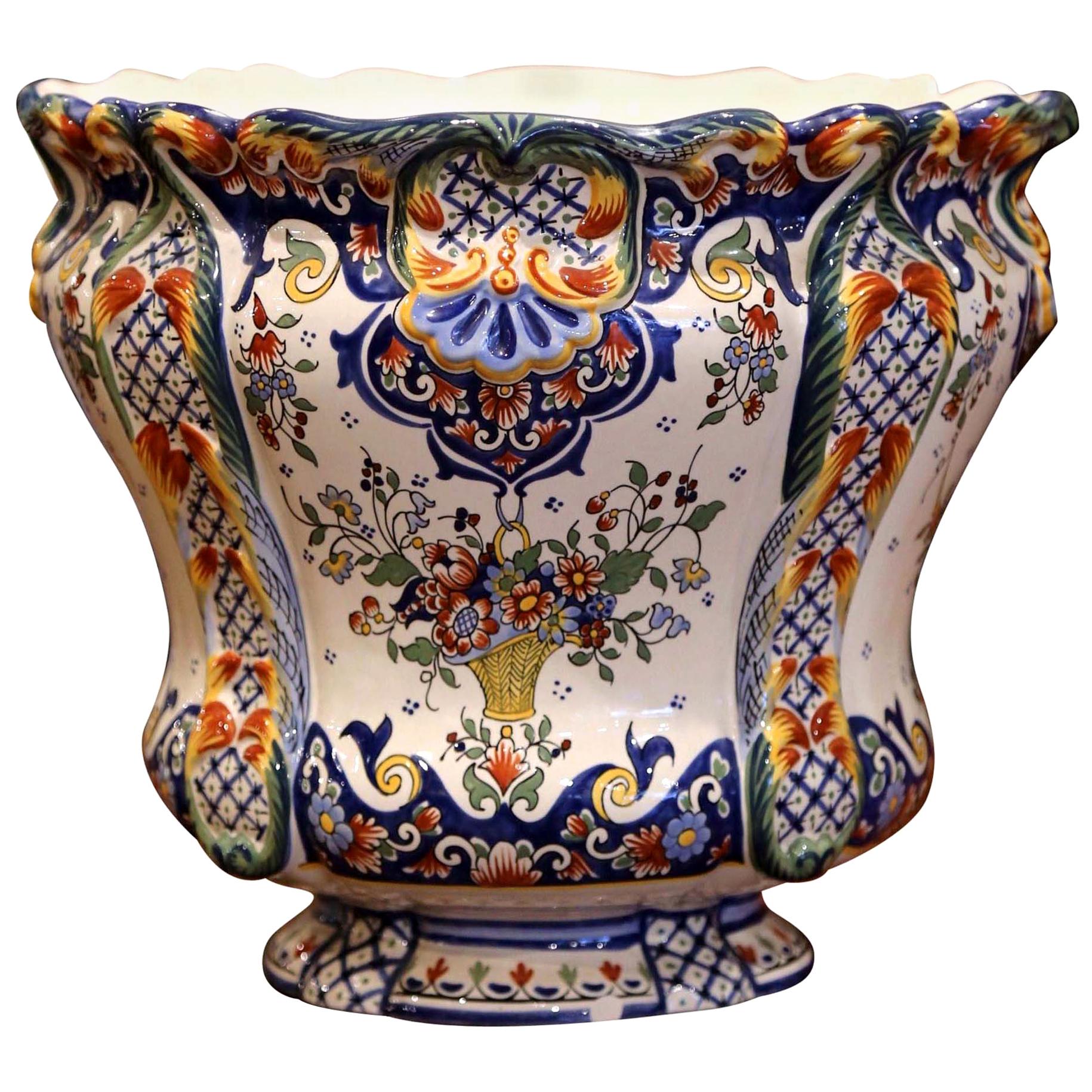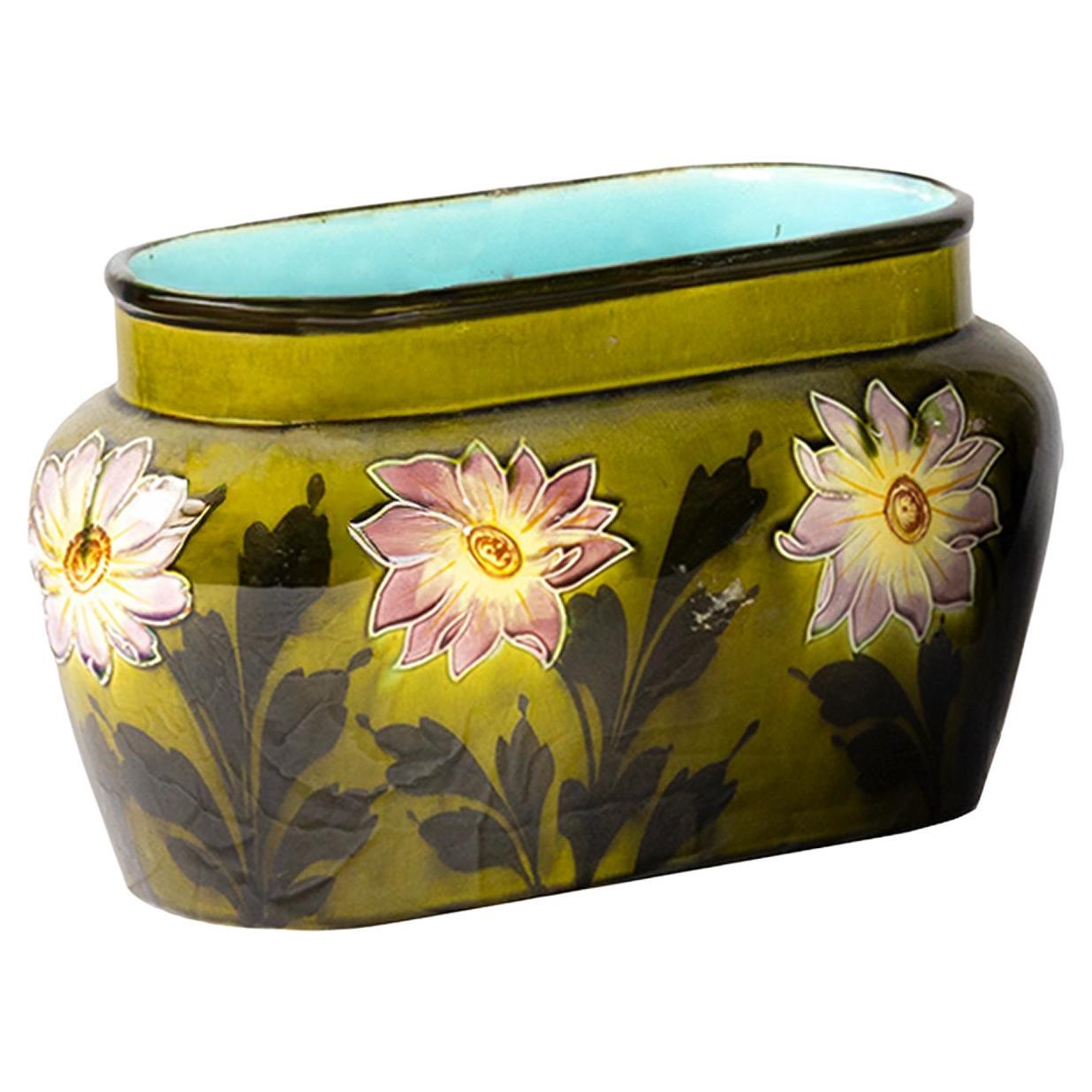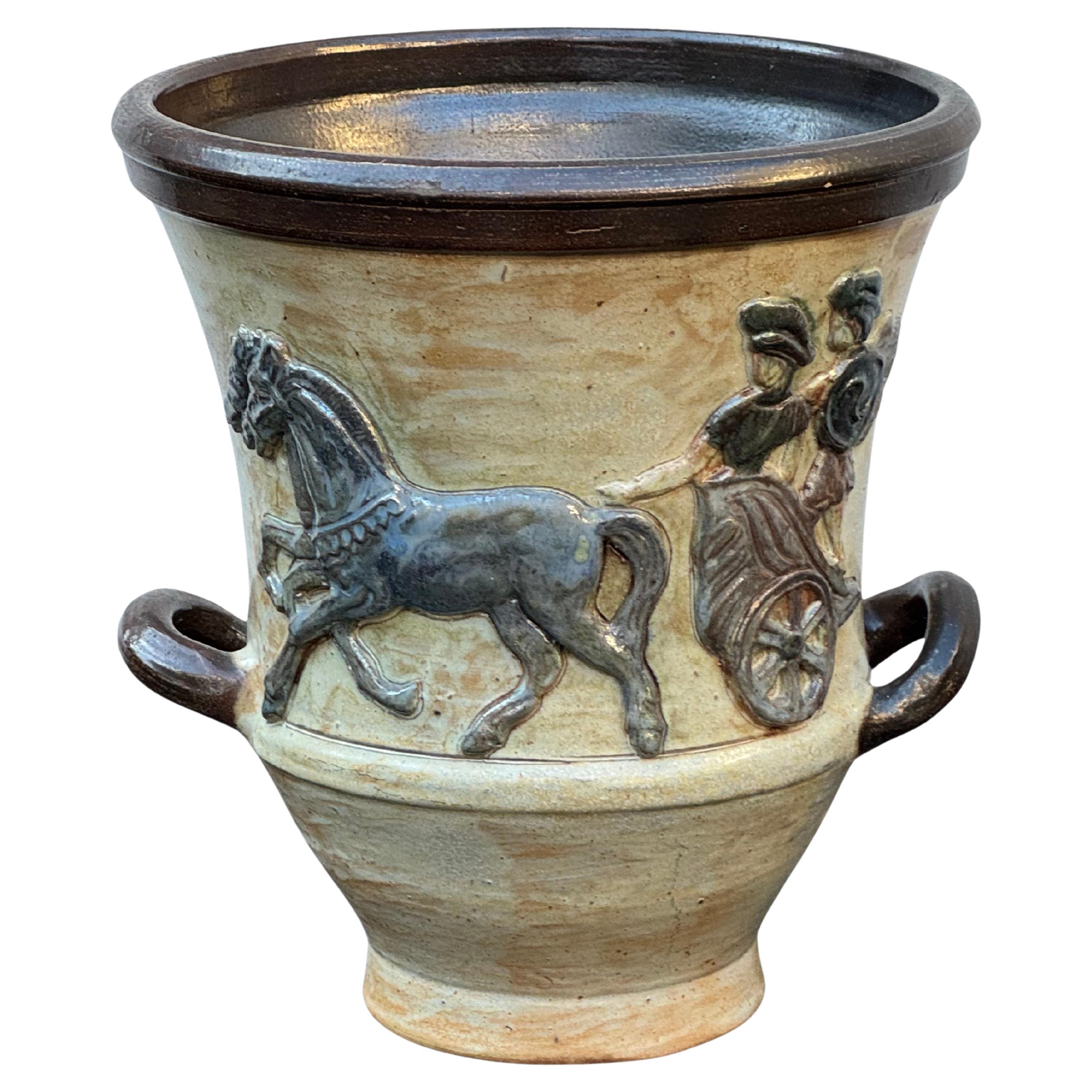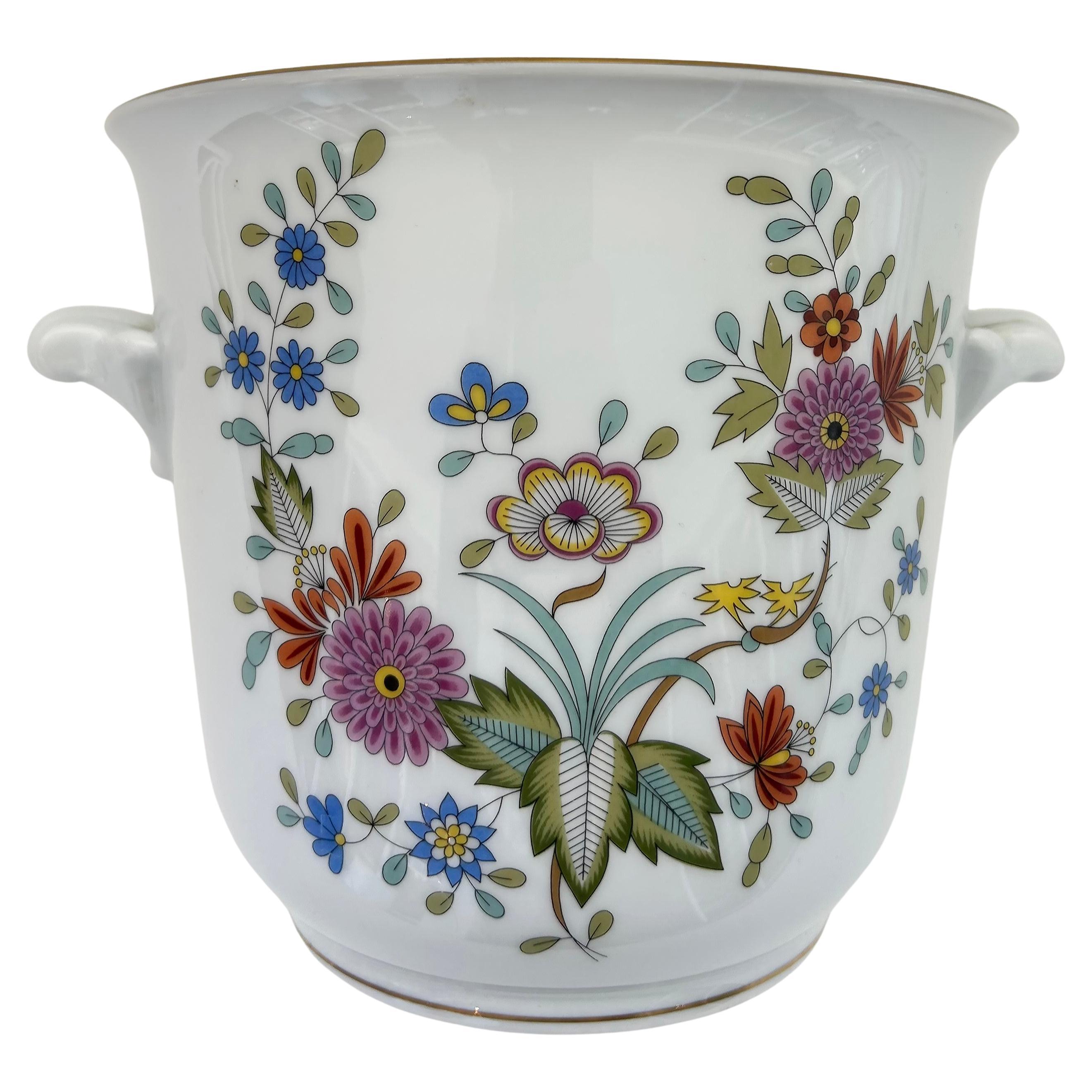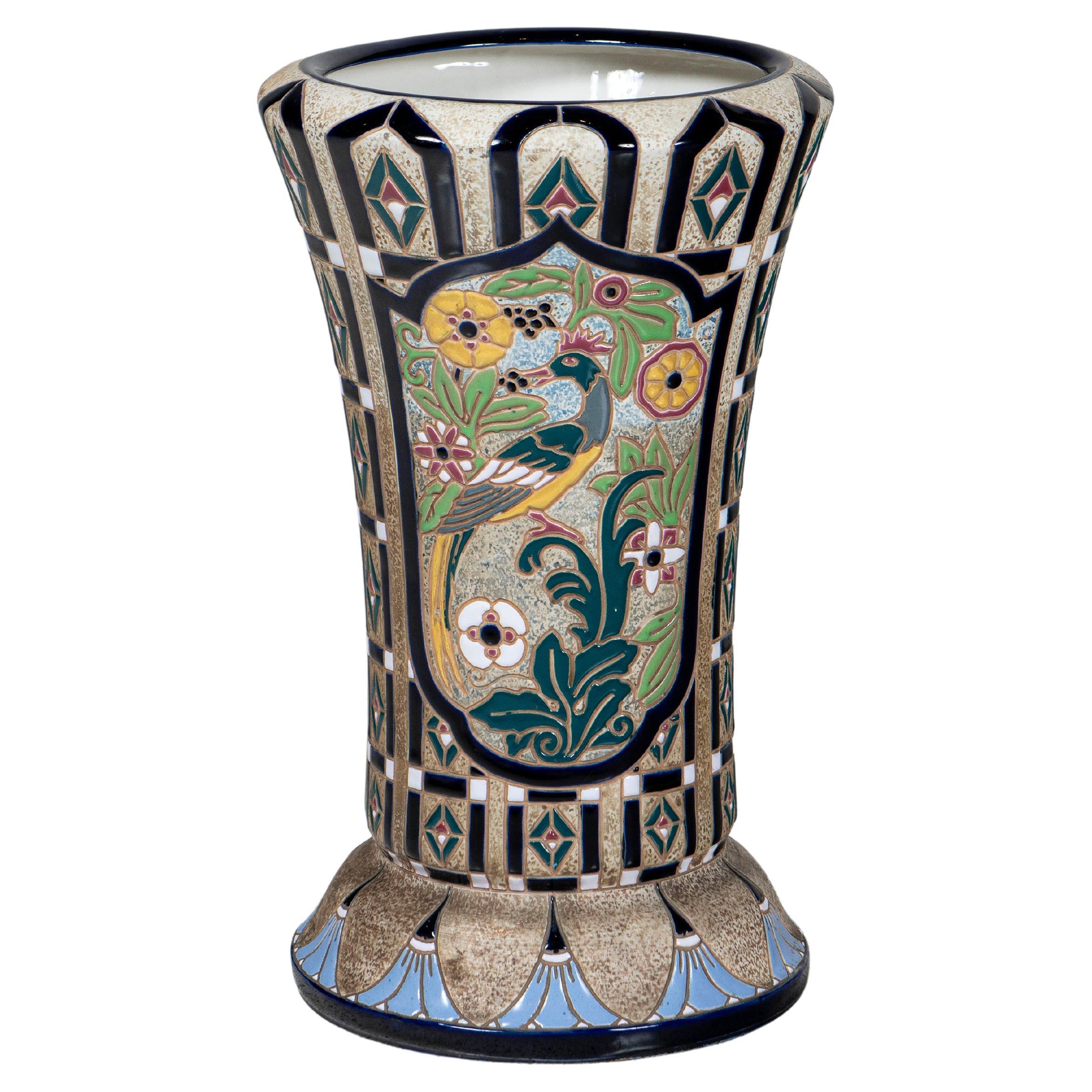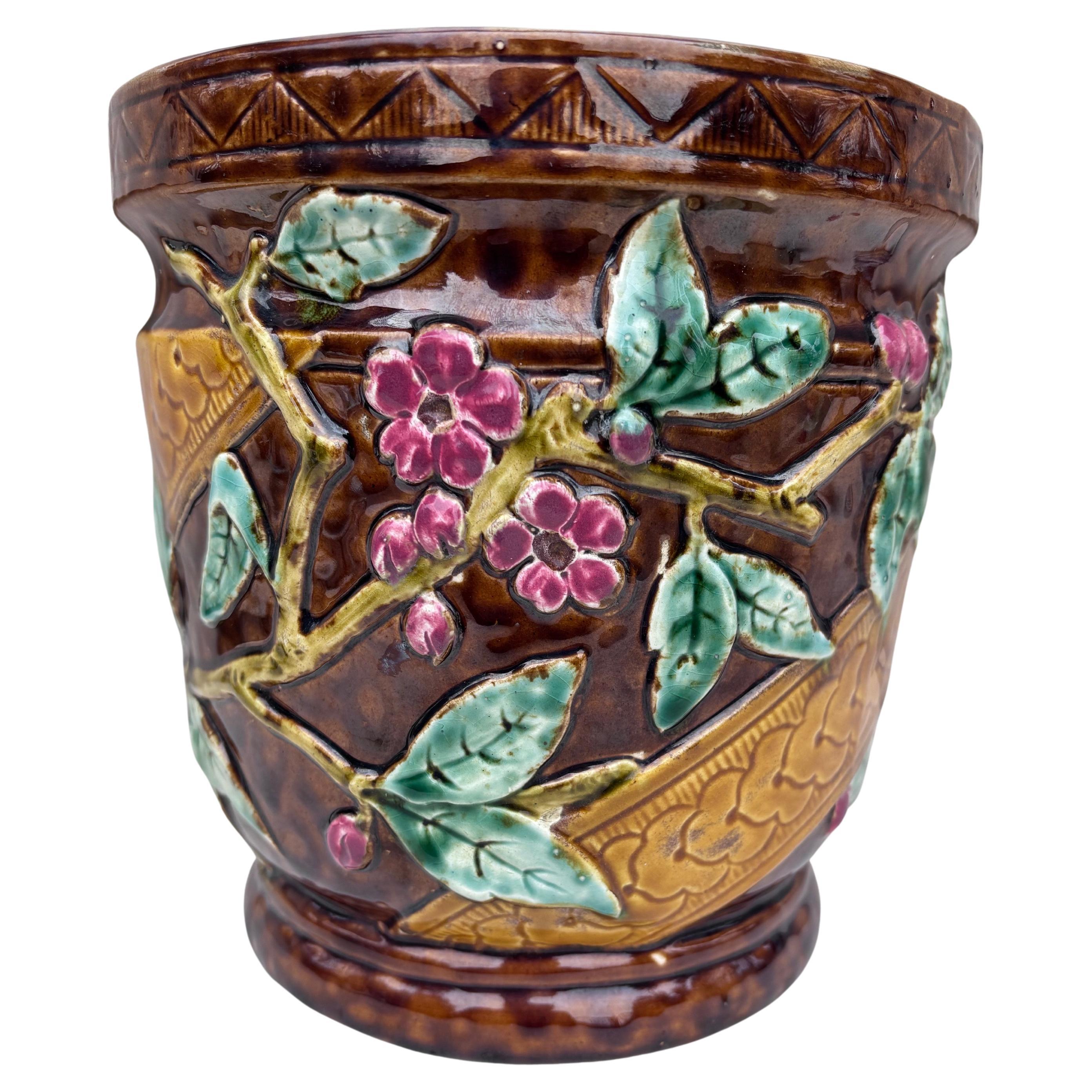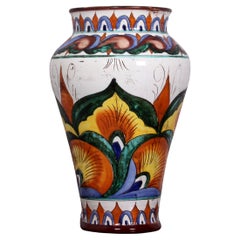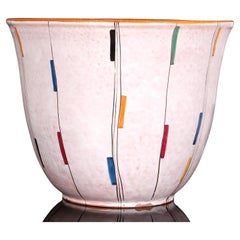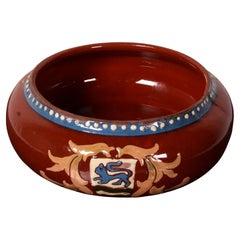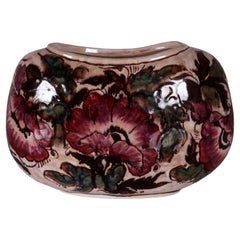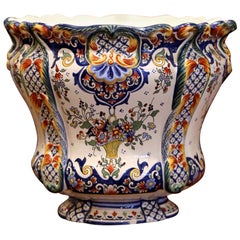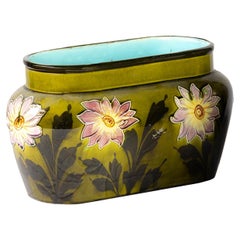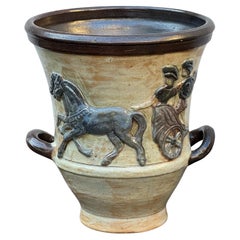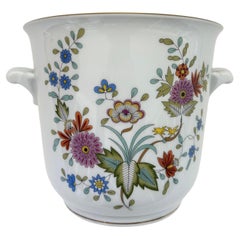Items Similar to Cachepot Ø 22cm Planter by Villeroy & Boch Dresden art deco model " Steiermark "
Want more images or videos?
Request additional images or videos from the seller
1 of 16
Cachepot Ø 22cm Planter by Villeroy & Boch Dresden art deco model " Steiermark "
$551.95
$689.9320% Off
£411.22
£514.0220% Off
€464
€58020% Off
CA$774.38
CA$967.9720% Off
A$850.82
A$1,063.5220% Off
CHF 438.76
CHF 548.4520% Off
MX$10,193.65
MX$12,742.0620% Off
NOK 5,570.91
NOK 6,963.6420% Off
SEK 5,228.07
SEK 6,535.0920% Off
DKK 3,534.74
DKK 4,418.4220% Off
About the Item
Cachepot Planter
by Villeroy & Boch Dresden
art deco
model " Steiermark "
Design Period 1930s
Production Period 1930s
handpainted
Country of Manufacture Germany
MARKED: yes (see photos)
:-: in excellent condition :-:
Ø : 22cm ~ height: 17cm ~ weight: 1324 grs
To ensure a safe arrival, this item is packed in super-safe packaging.
(up to 5 Kg)
Villeroy & Boch productionin Dresden from 1906 to 1939
Dates and facts:
1906: Third German Arts and Crafts Exhibition in Dresden. The standout feature was the winter garden of the first industrial hall, designed by Max Hans Kühne. Tableaux with the same motifs were located in the kiln hall of the factory premises on Leipziger Straße until 1994. Villeroy & Boch was awarded the State Medal in recognition of its outstanding achievements in the field of architectural ceramics.
Heinrich Ruppe was Director in Dresden from 1907 to 1920. He had previously been Director in Wallerfangen from 1900 to 1907.
In 1923, Dresden became the new headquarters of the general management, replacing Mettlach. The Saarland was separated from the German Reich for 15 years after the First World War.
On 29 October 1923, the Dresden earthenware factory was registered as a branch of Villeroy & Boch A. G., with headquarters in Breslau.
In 1928, Dresden was the location. The first director was: Dr Hans Lehmann, Dresden.
In 1928, Luitwin von Boch-Galhau was awarded an honorary doctorate by the Rector of the Dresden University of Technology.
In 1930, Michael Röscher became Director of the Dresden General Directorate.
In October 1930, the Dresden earthenware factory was closed and modernised.
In January 1931, production resumed with modernised technology and a workforce reduced by almost 40%.
In 1931, Dr Rudolf Sies became Commercial Director in Dresden.
In 1932, Michael Röscher, Director of the Dresden General Directorate, was appointed to the Management Board of Villeroy & Boch Keramische Werke AG.
Franz von Papen resigned from the Management Board of Villeroy & Boch Keramische Werke AG to assume the role of Chancellor.
Fritz Kreikemeier was Commercial Director in Dresden from 1 January to 27 April, succeeding Dr Sies.
In 1934, Paul Graeben was appointed Commercial Director of Steingutfabrik Dresden, a position he held until 31 December 1942.
In 1935, the Dresden General Directorate of Villeroy & Boch Keramische Werke AG was relocated to Mettlach and merged with the General Directorate there.
*~* your pleasure is our de-lite *~*
- Creator:Villeroy & Boch (Maker)
- Dimensions:Height: 6.7 in (17 cm)Diameter: 8.67 in (22 cm)
- Style:Art Deco (Of the Period)
- Materials and Techniques:
- Place of Origin:
- Period:
- Date of Manufacture:1930-1938
- Condition:Wear consistent with age and use.
- Seller Location:Landshut, DE
- Reference Number:1stDibs: LU8587241875922
About the Seller
5.0
Vetted Professional Seller
Every seller passes strict standards for authenticity and reliability
1stDibs seller since 2023
22 sales on 1stDibs
Typical response time: 7 hours
- ShippingRetrieving quote...Shipping from: Bodenkirchen , Germany
- Return Policy
Authenticity Guarantee
In the unlikely event there’s an issue with an item’s authenticity, contact us within 1 year for a full refund. DetailsMoney-Back Guarantee
If your item is not as described, is damaged in transit, or does not arrive, contact us within 7 days for a full refund. Details24-Hour Cancellation
You have a 24-hour grace period in which to reconsider your purchase, with no questions asked.Vetted Professional Sellers
Our world-class sellers must adhere to strict standards for service and quality, maintaining the integrity of our listings.Price-Match Guarantee
If you find that a seller listed the same item for a lower price elsewhere, we’ll match it.Trusted Global Delivery
Our best-in-class carrier network provides specialized shipping options worldwide, including custom delivery.More From This Seller
View AllArt Nouveau Southern French Fayance art pottery FLOOR VASE rare colours&pattern
Located in Landshut, BY
A giving joy beautiful French Fayence Floor Vase
fantastic Art Nouveau pattern - Impressing Colours
Manufacturer unknown - marked
Design Period 1915 - 1925
Country of Manufacture : France
H / height: 46 cm ~ Gew. / weight: 4550 grs
DM / diameter max: 28 cm ~ DM oben / diameter inner rim: 19.8 cm
.... an ode to Southern France
A Legend of Provence
by Adelaide Anne Procter (30 October 1825 – 2 February 1864)
The lights extinguished, by the hearth I leant,
Half weary with a listless discontent.
The flickering giant-shadows, gathering near,
Closed round me with a dim and silent fear.
All dull, all dark; save when the leaping flame,
Glancing, lit up a Picture's ancient frame.
Above the hearth it hung. Perhaps the night,
My foolish tremors, or the gleaming light,
Lent power to that Portrait dark and quaint, —
A Portrait such as Rembrandt loved to paint, —
The likeness of a Nun. I seemed to trace
A world of sorrow in the patient face,
In the thin hands folded across her breast: —
Its own and the room's shadow hid the rest.
I gazed and dreamed, and the dull embers stirred,
Till an old legend that I once had heard
Came back to me; linked to the mystic gloom
Of that dark Picture in the ghostly room.
In the far south, where clustering vines are hung;
Where first the old chivalric lays were sung;
Where earliest smiled that gracious child of France,
Angel and knight and fairy, called Romance,
I stood one day. The warm blue June was spread
Upon the earth; blue summer overhead,
Without a cloud to fleck its radiant glare,
Without a breath to stir its sultry air.
All still, all silent, save the sobbing rush
Of rippling waves, that lapsed in silver hush
Upon the beach; where, glittering towards the strand
The purple Mediterranean kissed the land.
All still, all peaceful; when a convent chime
Broke on the mid-day silence for a time,
Then trembling into quiet, seemed to cease,
In deeper silence and more utter peace.
So as I turned to gaze, where gleaming white,
Half hid by shadowy trees from passers' sight,
The Convent lay, one who had dwelt for long
In that fair home of ancient tale and song,
Who knew the story of each cave and hill,
And every haunting fancy lingering still
Within the land, spake thus to me, and told
The Convent's treasured Legend, quaint and old: —
Long years ago, a dense and flowering wood,
Still more concealed where the white convent stood,
Borne on its perfumed wings the title came:
" Our Lady of the Hawthorns " is its name.
Then did that bell, which still rings out to-day,
Bid all the country rise, or eat, or pray.
Before that convent shrine, the haughty knight
Passed the lone vigil of his perilous fight;
For humbler cottage strife or village brawl,
The Abbess listened, prayed, and settled all.
Young hearts that came, weighed down by love or wrong,
Left her kind presence comforted and strong.
Each passing pilgrim, and each beggar's right
Was food, and rest, and shelter for the night.
But, more than this, the Nuns could well impart
The deepest mysteries of the healing art;
Their store of herbs and simples was renowned,
And held in wondering faith for miles around.
Thus strife, love, sorrow, good and evil fate,
Found help and blessing at the convent gate.
Of all the nuns, no heart was half so light,
No eyelids veiling glances half as bright,
No step that glided with such noiseless feet,
No face that looked so tender or so sweet,
No voice that rose in choir so pure, so clear,
No heart to all the others half so dear,
So surely touched by others' pain or woe,
(Guessing the grief her young life could not know,)
No soul in childlike faith so undefiled,
As Sister Angela's, the " Convent Child. "
For thus they loved to call her. She had known
No home, no love, no kindred, save their own.
An orphan, to their tender nursing given,
Child, plaything, pupil, now the Bride of Heaven
And she it was who trimmed the lamp's red light
That swung before the altar, day and night;
Her hands it was whose patient skill could trace
The finest broidery, weave the costliest lace;
But most of all, her first and dearest care,
The office she would never miss or share,
Was every day to weave fresh garlands sweet,
To place before the shrine at Mary's feet.
Nature is bounteous in that region fair,
For even winter has her blossoms there.
Thus Angela loved to count each feast the best,
By telling with what flowers the shrine was dressed.
In pomp supreme the countless Roses passed,
Battalion on battalion thronging fast,
Each with a different banner, flaming bright,
Damask, or striped, or crimson, pink, or white,
Until they bowed before a newborn queen,
And the pure virgin Lily rose serene.
Though Angela always thought the Mother blest
Must love the time of her own hawthorn best,
Each evening through the years, with equal care,
She placed her flowers; then kneeling down in prayer,
As their faint perfume rose before the shrine,
So rose her thoughts, as pure and as divine.
She knelt until the shades grew dim without,
Till one by one the altar lights...
Category
Vintage 1910s French Art Nouveau Vases
Materials
Pottery
$1,891 Sale Price
36% Off
GIANT Cachepot Planter 1950s by Huber Roethe Landshut mid-century art pottery
By Huber-Roethe
Located in Landshut, BY
GIANT
Cachepot Planter 1950s
by Huber Roethe Landshut (that´s where we´re based)
mid-century art pottery
Design Period mid 1950s
Production Period 1952-1957
Country of Manufact...
Category
Mid-20th Century German Mid-Century Modern Planters, Cachepots and Jardi...
Materials
Pottery, Ceramic
small Jugendstil Austrian Art Nouveau bowl ar. 1910 lion crest red clay signed
Located in Landshut, BY
Beautiful & quite unique
Austrian Art Nouveau Bowl
" LION CREST "
red clay
The design of the motif is typical of Alpine Art Nouveau
Production Period around 1915
Country of Manuf...
Category
Vintage 1910s German Art Nouveau Decorative Bowls
Materials
Stoneware
$267 Sale Price
20% Off
elegant floral artful Italian vase by Elio Schiavon Italy 1960s handpainted
By Elio Schiavon
Located in Landshut, BY
This beautiful ceramic vase, which features a floral painting very similar to the designs of the renowned art mirror, was meticulously hand-painted in the Italian province of South T...
Category
Vintage 1960s Italian Mid-Century Modern Vases
Materials
Pottery
$267 Sale Price
20% Off
1950s Studio Keramik floor Vase series GARDA Atelier Huber Roethe Landshut
Located in Landshut, BY
STUDIO KERAMIK FLOOR VASE
Atelier Herta Huber Roethe Landshut 1950s
marked "HR"
Manufacturer ATELIER HUBER ROETHE
Design Period 1950 to 1959
Production Period 1950 to 1959
Count...
Category
Vintage 1950s German Mid-Century Modern Vases
Materials
Pottery
Gerda Heuckeroth Carstens Tönnieshof Midcentury Xxl German Floor Vase JAR 1960s
By Gerda Heuckeroth
Located in Landshut, BY
West German bulbous silhouette floor vase with handle by Gerda Heuckeroth for Carstens Tönnieshof mid/late 1960s.
Although much is known about the various West German pottery manufa...
Category
Mid-20th Century German Mid-Century Modern Jars
Materials
Pottery
You May Also Like
Early 20th Century, French Hand Painted Faience Planter from Normandy
By Rouen
Located in Dallas, TX
This elegant, antique ceramic cachepot was crafted in Normandy, France, circa 1920. Round in shape, the Classic, colorful planter has a curly, scallop...
Category
Early 20th Century French Planters, Cachepots and Jardinières
Materials
Ceramic, Faience
Art Nouveau Barbotine Green Cachepot Vase, Early 20th Century
By Creil et Montereau
Located in Lisbon, PT
An Art Nouveau small sized pot vase in green ceramic with floral barbotine reliefs.
The interiors are finished in a striking bluish glaze that contrasts elegantly with the naturalis...
Category
Early 20th Century French Art Nouveau Planters, Cachepots and Jardinières
Materials
Ceramic
$1,469 Sale Price
20% Off
Art Deco Belgium Stoneware Jardiniere Planter Large Sized Bouffioulx Armogres
Located in Torquay, GB
An attractive art deco Belgium stoneware jardiniere planter by Atelier Bouffioulx, Armogres, circa 1930s.
Huge planter vase depicting a greek horse drawn chariot.
The horses and char...
Category
Early 20th Century Belgian Art Deco Planters, Cachepots and Jardinières
Materials
Ceramic, Stoneware
Hutschenreuther Tirschenreuth, Germany Porcelain Cachepot with Floral Decoration
By Hutschenreuther
Located in Miami, FL
Hutschenreuther Tirschenreuth, Germany Porcelain Cachepot with Floral Decoration
Offered for sale is a Hutschenreuther Tirschenreuth, Germany porcelain cachepot circa 1980 with flor...
Category
Late 20th Century German Modern Planters, Cachepots and Jardinières
Materials
Porcelain
$235 Sale Price
20% Off
Enamel Ceramic Vase Signed Amphora, Austria, circa 1920
By Amphora Austria Manufactory
Located in Buenos Aires, Buenos Aires
Enamel Ceramic vase signed Amphora. Austria, circa 1920.
Category
Early 20th Century Austrian Art Deco Vases
Materials
Ceramic
French Majolica Cache Pot Longchamp , circa 1890
By Longchamp
Located in Austin, TX
French Majolica Cache Pot Longchamp , circa 1890.
H / 8.5 inches , D / 8.5 inches.
Category
Antique 1890s French Rustic Planters, Cachepots and Jardinières
Materials
Ceramic
More Ways To Browse
Boch Vintage
Art Deco German Vase
German Arts And Crafts
German Art Pottery Vase
Dresden Hand Painted
Dresden Pottery
Japanese Brush Pots
Large Chinese Porcelain Fish Bowl
Lion Paw Planter
Seashell Planters
Sevres Pot
Used Furniture In Phoenix
Vintage Chinese Fish Bowl
Cachepot Turquoise
Chinese Fish Bowl Planter
Famille Rose Planter
Gold Brass Planters
Imari Cachepot
